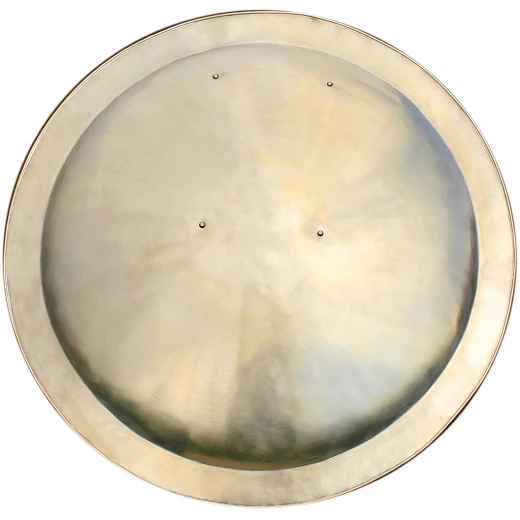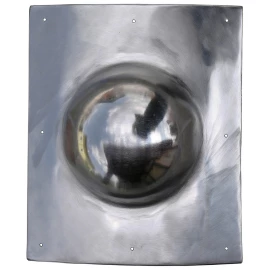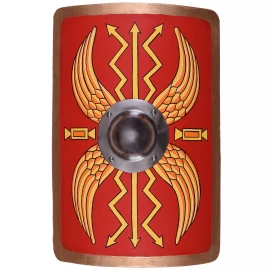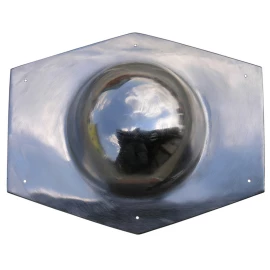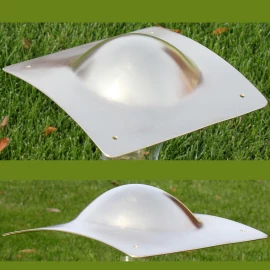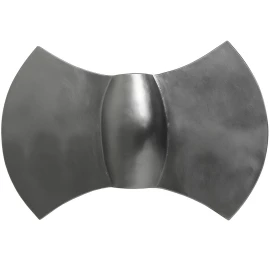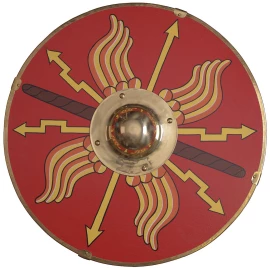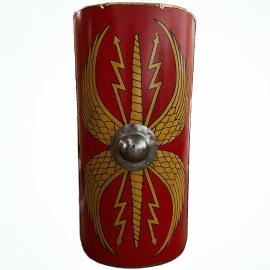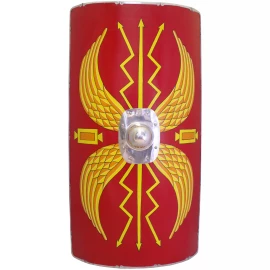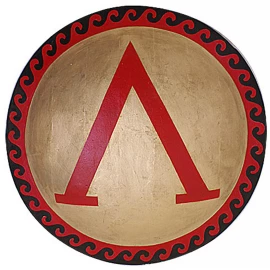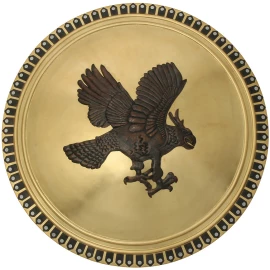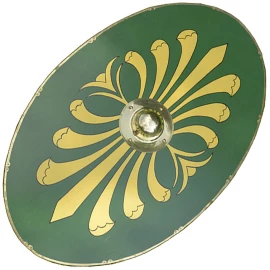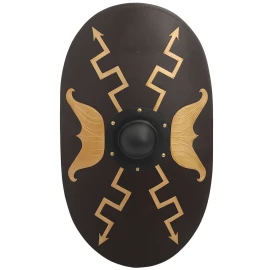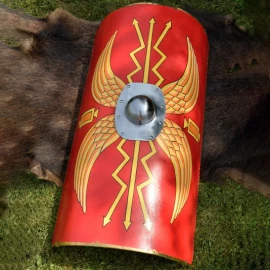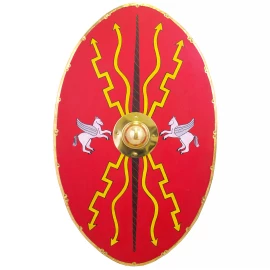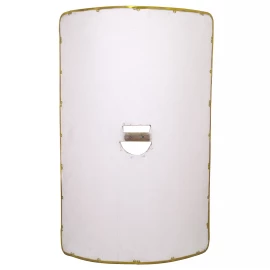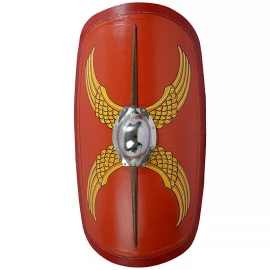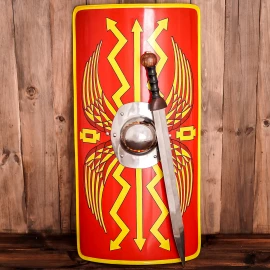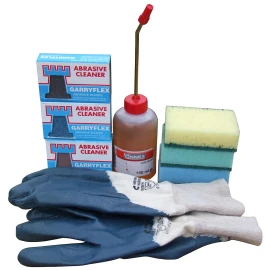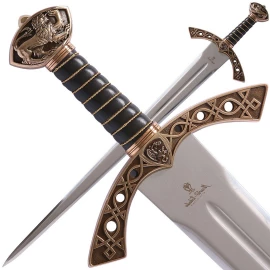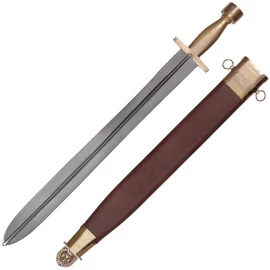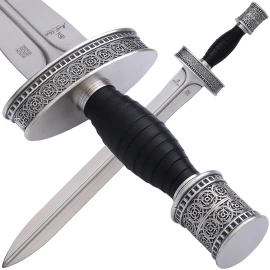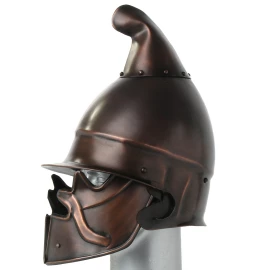Shield Aspis | Hoplon
A hoplon shield was a deeply-dished shield made of wood. Some shields had a thin sheet of bronze on the outer face, often just around the rim. In some periods, the convention was to decorate the aspis; in others, it was usually left plain. Probably the most famous aspis decoration is that of Sparta: a capital lambda (Λ). From the late 5th century BC, Athenian hoplites commonly used the Little Owl, while the shields of Theban hoplites were sometimes decorated with a sphinx, or the club of Heracles. More information...
Notify me when the item is in stock.
We will inform you as soon as we stock up.
Aspis | Hoplon – brass shield of the ancienit Greek infantry (hoplites)
- overall diameter approx. 92cm (36”)
- hand hammered from brass plate, thick 1.5mm (gauge 16)
- Weight approx. 8600 g
- iron handle covered with hard wood on the inside
- riveted adjustable leather strap with Buckle for the forearm
The large shield used by the Greeks was an excellent defense as it could stop most weapons of its time. In addition, its weight made it a dangerous weapon. A thrust forward with the shield could knock an opponent down, setting him up for a kill with any of the attacker's weapons; it could also be used as a killing weapon itself, the weight and thin edge making it a superb blunt weapon. However, its weight also made it cumbersome on long marches. Hoplites who had to retreat quickly after losing a battle were often forced to drop their shields, which might cause them to be ridiculed for cowardice upon their return home. It has been theorized that the concave shape of the shield may have served to give its owner some breathing space in phalanx combat, when the press of warriors in front of and behind him could be literally suffocating.
We are here for you


